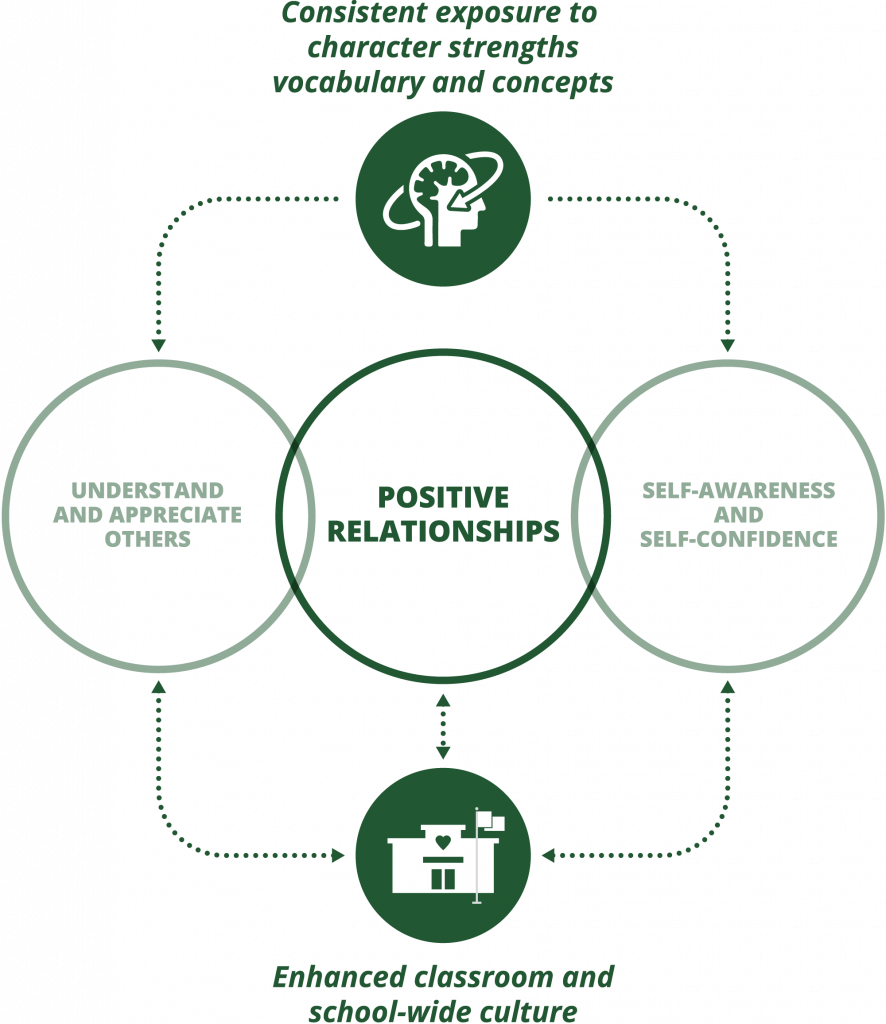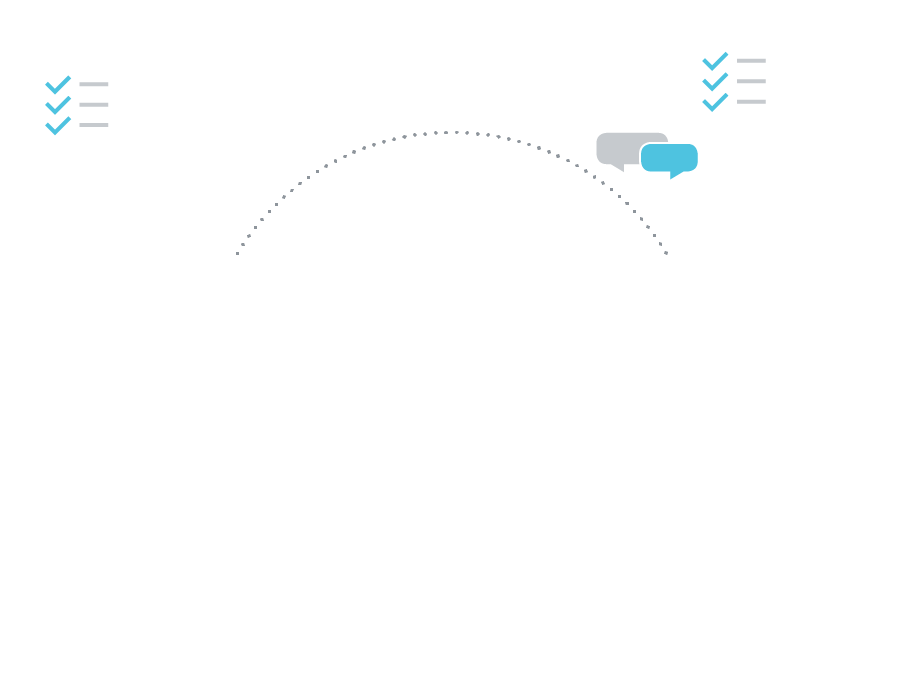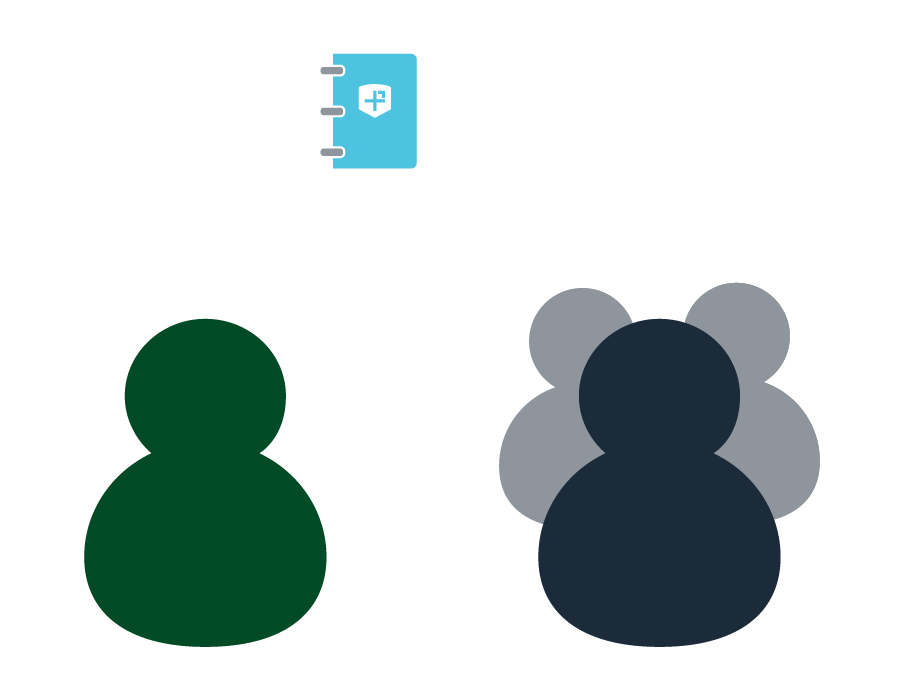How It Works
Easy for educators and impactful for students. We equip Pre-K-12 schools with the resources, strategy, and training to teach positive psychology’s 24 character strengths and empower their students to build positive relationships.
Step 1
Resources
Upon becoming a Partner School, you unlock staff-wide access to The Positivity Project’s resources. Tier 1 daily 15-minute digital lessons, shared via Google Slides, are zero-prep and easily delivered by any teacher. Partner Schools also have access to Tier 2 and 3 resources, P2 for Families, P2 for Educators, P2 PBL – and more.
Step 2
Strategy
Now that you have access to P2’s resources, you need a strategy to implement with fidelity. That’s where P2’s 1-Page Implementation Plan comes in. This is an easy-to-use tool for school leaders to develop a plan and communicate it with their entire staff so that everyone is on the same page. The 1-Page Implementation Plan is bolstered by our Implementation Playbooks, differentiated for elementary, middle, and high school.
Step 3
Training
Equipped with resources and an implementation strategy, now it’s time to train your staff in the why, what, and how of P2. This is easy to accomplish through our on-site training, digital on-demand training, and ongoing professional development throughout the school year.
Why it Works
The Positivity Project’s emphasis on consistency is grounded in research from child psychology and neuroscience. As the adage goes, “Neurons that fire together, wire together.” Learn more about our model here.
Our Model

Why Does P2 Emphasize Consistency?
Our model is comprehensive and consistent – integrating and benefiting students, educators, and families through frequent engagement with the language and principles of character strengths. This emphasis on consistency is grounded in research from neuroscience.
As Eric Jensen explains in “Teaching with the Brain in Mind,” the most effective method for learning a new word, concept, or skill involves a blend of active learning (like pair-sharing, constructing, and sketching), passive learning (such as listening, observing, and generalizing), coupled with settling time (activities including walking, sleeping, and eating). Spreading out these educational experiences aids significantly in consolidation, which is the transformation of electrical and chemical brain activity into lasting memory.
This consistency is why 8th grade students at J.M. McKenney Middle School say things like, “Perseverance and Perspective have been major strengths that helped me handle social and educational challenges. Being reminded that things will pass and that I have the ability to grow and learn from them have been incredibly helpful.”
Dr. Chris Peterson emphasized the importance of habitual action in character development, stating, “Theorists as far back as Aristotle argued that virtue is the product of habitual action. One-shot positive psychology interventions can probably jump-start the process, but only sustained practice will make changes permanent.”
The ability to understand and articulate all 24 character strengths is important because, as Dr. Peterson explained, it “provides a useful vocabulary for people to talk about character strengths in an appropriately nuanced way. Simply saying that someone has good character (or not) does not lead to anywhere useful. In contrast, using the strengths concepts…people can describe the profile of strengths that characterize each individual.”
The P2 Difference
The Positivity Project (P2) stands out in its approach to fostering character development and positive relationships in schools. Here’s how:
Ease of Use: At the heart of P2 is our commitment to simplicity and effectiveness. Designed for minimal teacher preparation, our resources, including ready-to-use digital lessons and interactive tools, integrate seamlessly into daily school routines. This ease of use ensures that educators can focus more on teaching and less on planning, making character education easy and enjoyable.
Common Vocabulary: P2 is not just a program; it’s a language that unites. By providing a common vocabulary across our schools, we enhance communication and recognition of positive character strengths. This shared language bridges gaps between students, educators, and families, fostering a cohesive and supportive educational environment. It allows everyone in the school community to engage in meaningful conversations about character, setting the stage for lasting personal and academic growth.
Positive Culture: The essence of P2 lies in its ability to strengthen school cultures – in diverse and distinct communities across the country. By focusing on character strengths and relationships, P2 nurtures an environment where positive behaviors flourish. This approach cultivates a culture of mutual respect, empathy, and understanding. The impact is profound: students learn to appreciate other people, educators foster more constructive interactions, and the entire school community thrives.
These distinctive elements of The Positivity Project embody our mission to empower students and educators to build positive relationships and understand their own and others’ character strengths. It’s not just about teaching; it’s about positively impacting lives and communities.
What is Positive Psychology?
Positive psychology is the scientific study of what makes life most worth living — and maintains that what is good in life is as genuine as what is bad. Positive psychology’s 24 character strengths are grounded in extensive research that resulted in the landmark 800-page book Character Strengths and Virtues.
Character Strengths and Virtues presents evidence that all 24 strengths exist in every person — and in all cultures of the world. Character strengths define who, not what, a person is. Ranging from bravery and forgiveness to integrity and gratitude, these character strengths are the foundation of The Positivity Project’s model.











